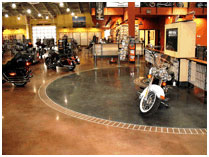There are some common problems that anyone with concrete on their property can encounter. When you look at the concrete in your driveway or garage, you may notice some of these same issues. The following are a few problems that property owners can encounter, and how they can be avoided.
Discoloration
Discoloration in the concrete is very common, but generally, it shouldn’t happen unless there are a few missteps in pouring your concrete mix. The concrete is supposed to have the same consistent color when it’s all poured from the same mix, using the same materials. Discoloration happens when a contractor cuts corners by adding water to the mix at a job site. It can also happen when they add calcium chloride.
In order to prevent discoloration, the concrete pouring should have consistent conditions for the subgrade placing and curing. When using calcium chloride, make sure you use the liquid, and not the flaked. Calcium chloride flakes are hard to dissolve, but liquid calcium will not cause spots.
Scaling
This is another fairly common problem. Scaling happens if the surface of the concrete breaks off or peels away gradually. This is caused when the concrete strength is not adequate, or a proper curing procedure was not followed. Water seeping into a porous concrete is another cause, which makes it susceptible to freeze-thaw cycles.
Scaling can be prevented when the concrete is able to finish at the right time. The right time is when all the water in the concrete mix has evaporated. Also, during the winter months, concrete should be cured without the use of salt or other chemicals.
Cracking
As everyone knows, concrete cracks easily. There are a number of reasons that this cracking in the concrete may occur. Concrete shrinkage can be directly related to the cracking. It can be caused by shrinkage from drying, heat contraction, and subgrade settlement. The weight of loads applied to the concrete can also cause cracking.
To avoid cracks in the concrete, make sure all the soil underneath the slab is compacted. The subgrade should be sloped for adequate draining. You should never finish the concrete if it has not had the chance to finish bleeding. And finally, avoid overworking the surface of your concrete.






Comments are closed.